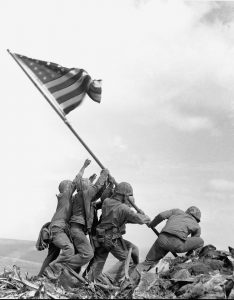
By Vanessa Mallory Kotz
There’s a lot of talk today about fake news. Americans must be critical of what they read and see, consider sources, agendas and learn the facts. Photo journalism is undeniable. The photographs of refugee children being separated from their parents at the U.S.-Mexico border have earned attention by human rights advocates and concerned citizens across the country and throughout the world.
Thousands are protesting the current administration’s zero tolerance immigration policy because of images like the now-infamous photo of a two-year-old Honduran asylum seeker crying as her mother is searched and detained on June 12, 2018. A controversial, politicized moment captured by a talented photographer reminds us of the very real human struggles that get lost in the chaos of punditry and opinion pieces.

The Newseum in Washington, D.C. reminds visitors that ethical journalism is well and alive. One of is most powerful installations is the Pulitzer Prize Photographs Gallery. Associated Press photographer Joe Rosenthal’s 1945 photo of Marines raising the American flag during the Battle of Iwo Jima is one of many iconic images on display in the gallery.

Photographer Ryan Kelly of The Daily Progress in Charlottesville, Virginia, won the 2018 prize for Breaking News Photography category. In an incident that made national headlines, he captured the chilling moment when a car driven by a white nationalist slammed into counter-protesters during the Unite the Right rally on Saturday, August 12, 2017. The photo “reflected the photographer’s reflexes and concentration,” the Pulitzer Board noted.
Indira Williams Babic, director of photography and visual resources at the Newseum, has reorganized the popular exhibition hall to give visitors access to more images and information about them. Didactic text and physical artifacts such as cameras and diaries filled with the photojournalists’ field notes are on view. Additionally, interactive touch screens in the gallery display more than 1,000 images and 15 hours of video and audio compiled from interviews with the prize-winning photographers.
“This is the only place where you can see every one of the photos since [the prize] started,” Williams Babic said. Forty prints are mounted to the walls, complemented by kiosks that contain electronic versions of more than 1,100 images. “Our goal is to tell the story behind the story,” Williams Babic said. “There is a sense of reverence from the visitors,” she added. “The photographer wants to effect change.”
Check out the Newseum App to browse Pulitzer Prize-winning photographs awarded over the last 100 years: App store Google Play
[Tweet “Photographs Tell the Story: Newseum’s Pulitzer Prize Gallery”]




